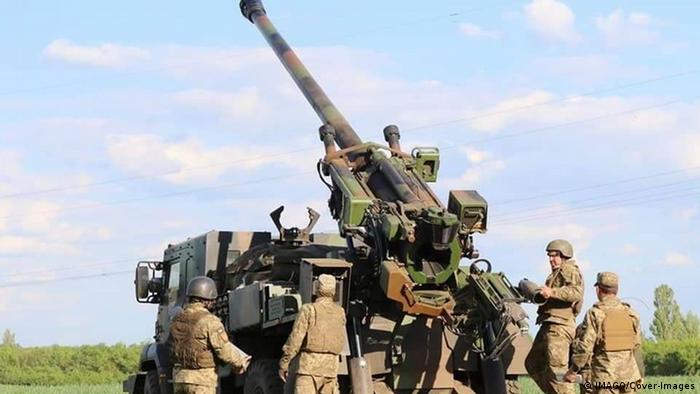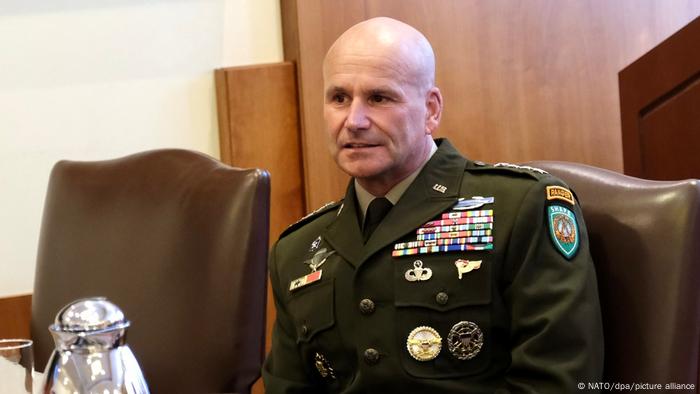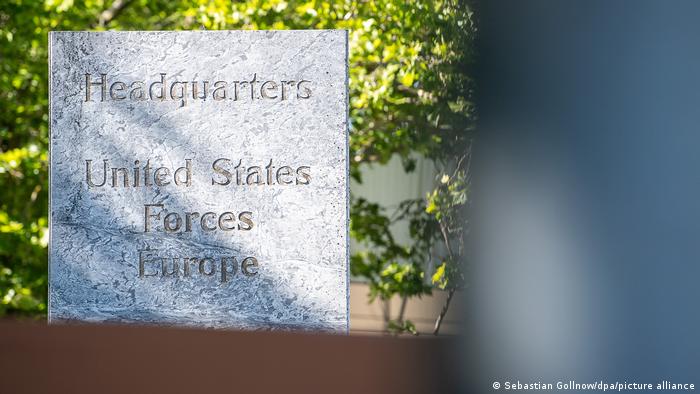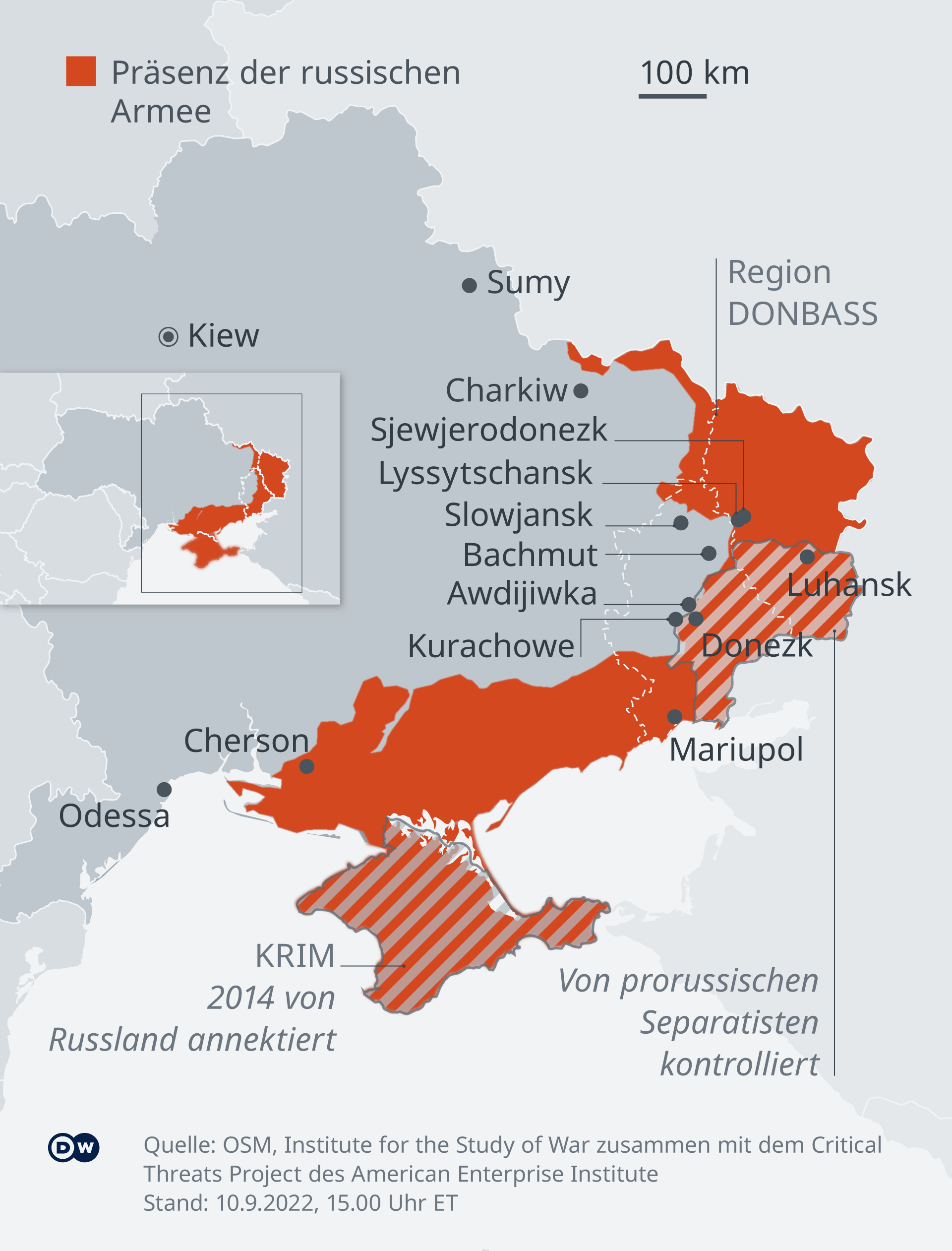While the Russian army is launching rocket attacks on Ukrainian cities, widespread shelling along the front has come to a standstill. Experts believe a turning point has been reached.

French-type mobile artillery unit CAESAR in Ukraine
From here, the USA, together with more than 50 countries, is coordinating military aid for the attacked Ukraine, which may have been able to bring about a turning point in the war in recent weeks: A large, shielded room with makeshift data cables, uniformed officers from numerous Western countries, who sit on their laptops and communicate in multiple languages with their senior management at home and with the Ukrainian government. This is reported unanimously by several American media who had access to the patch barracks of the US armed forces in the Stuttgart district of Vaihingen in southwest Germany. The European Command of the US Army (EUCOM), which has been under the command of US General Christopher G. Cavoli since the beginning of July, is located close to the airport and the motorway.

US General Cavoli took over command of the NATO forces and the US European Command in July -Army
Born in 1964 in Würzburg, southern Germany, to a US Army family stationed in Germany, the military man is considered an expert on Europe and Russia with a degree in Eastern European Studies from Yale University. Cavoli is also tasked with strengthening NATO's eastern flank in response to Russia's war against Ukraine.
Ukraine Headquarters at European Command
The constant demands of the Ukrainian army arrive at the hastily set up Ukraine headquarters of EUCOM. It was an “atmosphere like in the days of the Allies in World War II,” wrote the Washington Post at the end of July. The starting point was the Ukraine donor conference convened by the USA at the US Air Force base in Ramstein in Germany on April 26.

In the US Army's patch barracks in Stuttgart, southwest Germany, the western supporter states are organizing military aid to Ukraine
More than 50 states are now supporting Ukraine with arms deliveries led by the USA. In a so-called contact group, they have also been agreeing politically for months on which country can deliver which weapons to Ukraine and also how the heavy weapons such as the US HIMARS artillery pieces or the self-propelled howitzer delivered from Germany and the Netherlands should be sent Get to the Ukrainian front in 2000.
Russia must react to Ukraine now
This help may have now led to a turning point, says German Ukraine expert Nico Lange. “The decisive point of these last few days is that Russia is now forced to react to statements and actions by the Ukrainians. So far it was the other way around: the Ukrainians were forced to react to everything that Russia does,” Lange said in an interview the DW. By targeting HIMARS at ammunition depots and command units of the Russian army, the Ukrainians were able to at least reduce the area bombardment with grenades in the east and south of the country “by a factor of five or six,” Ukrainian presidential adviser Mykhailo Podoliak confirmed in a DW interview.
According to Nico Lange, an expert on Eastern Europe, “Russia has now shifted considerable forces to the south, both in the direction of Cherson and in the direction of Zaporizhia, in order to strengthen itself there and to concentrate on securing and holding the conquered areas”. According to an intelligence report from the British Ministry of Defense, Russian units are using the area around the largest nuclear power plant in Europe they are occupying, near Zaporizhia on the Dnieper River, for protection. “Russian forces likely used the wider site of the facility, particularly the adjacent town of Enerhodar, for resting their troops,” the daily bulletin said. Russia uses “the protected location of the nuclear power plant to reduce the risk to its equipment and personnel from Ukrainian attacks at night”.
At the beginning of August, the head of the International Atomic Energy Agency (IAEA) apparently demanded access to the nuclear facility again for this reason. “This shows that the war is changing,” says Ukraine expert Nico Lange, “and that Russia is now forced to react to these things that Ukraine is doing.” The myth that Russia could ” escalate indefinitely” is refuted by the fact that Russia has “enormous” military difficulties. “Both north of Kharkiv and in Cherson in the south, the Russians have gone over to the defense and are showing their determination to hold this area.”
Ukrainian counter-offensive also with partisans?
For weeks now, Ukrainian President Volodymyr Zelensky has been announcing a counter-offensive for the south of his country. Eastern Europe expert Lange believes: “A Ukrainian attack will not look like that of the Russians with this all-destroying barrage of fire. Instead, it will also use partisans, with uprisings in the occupied cities, with mobile operations behind enemy lines. “

Behind enemy lines: Reports of increased operations by Ukrainian partisans are mounting
Leaflets from the Russian-occupied city of Cherson repeatedly appear on social media channels, showing posters warning the Russian occupiers. “We all know your patrol routes,” it says, and “Kherson is Ukrainian.” “The Russians have great problems controlling these areas,” Lange believes. “In the occupied part of Zaporizhia Oblast there is a lot of partisan activity: Russian patrols are killed at night. In Melitopol, too, posters against the Russian occupiers are hanging, as in Cherson, and there are leaflet campaigns. There's always something new,” says Lange .
War in Ukraine: Prisoners of war as a political toy
The Ukrainian governor of the largely Russian-occupied Luhansk region in eastern Ukraine is now writing on Twitter about a partisan action in the municipality of Bilovodsk. There, Ukrainian partisans are said to have shot at and injured the mayor appointed by Russia and his deputy. The subsequent Russian search for the Ukrainian underground fighters was unsuccessful. Such information cannot be independently confirmed.
The site of the incident is astonishing: Bilovodsk is deep in Russian-occupied territory in the Luhansk region, just 40 kilometers from the Russian border, north of the former so-called contact line, which had divided the occupied part of eastern Ukraine since 2014 and until the Russian attack at the end of February this year separated from the Ukrainian-controlled area of the Luhansk region. The regional governor's tweet can also be seen as a signal to western supporters: the partisan struggle is also gaining momentum in remote regions.
Demand for ATACMS missiles
The place is right beyond the range of the missiles previously supplied by the USA for the HIMARS type M31 with a maximum of 84 kilometers. The artillery systems can also launch ATACMS (Army Tactical Missile System) missiles with a range of 300 kilometers. Ukraine also requests this weapon from the western contact group and its operations center at Stuttgart's EUCOM. So far, the United States has spoken out against it because the Ukrainian army could use it to reach Russian territory. However, the willingness to deliver more intelligent weapon systems has increased in recent months. According to Ukrainian Foreign Minister Dmytro Kuleba, it seems to him “like in a video game” that is about reaching the next level. However, the Ukrainian soldiers killed at the front would only have one life each.